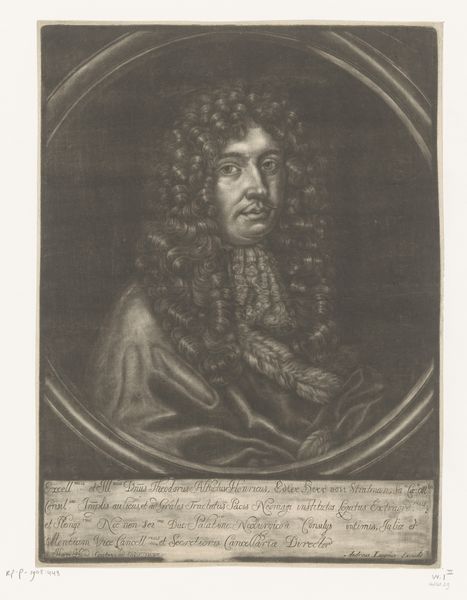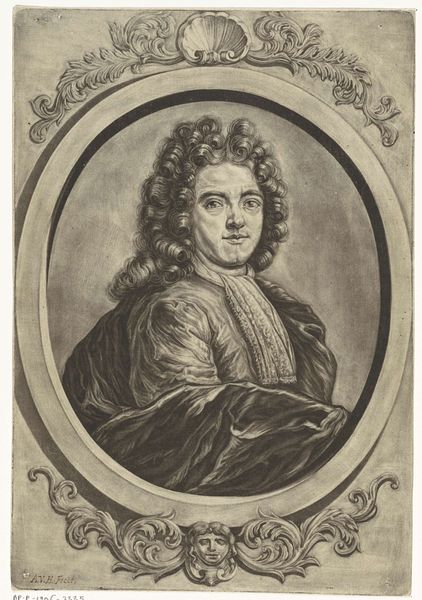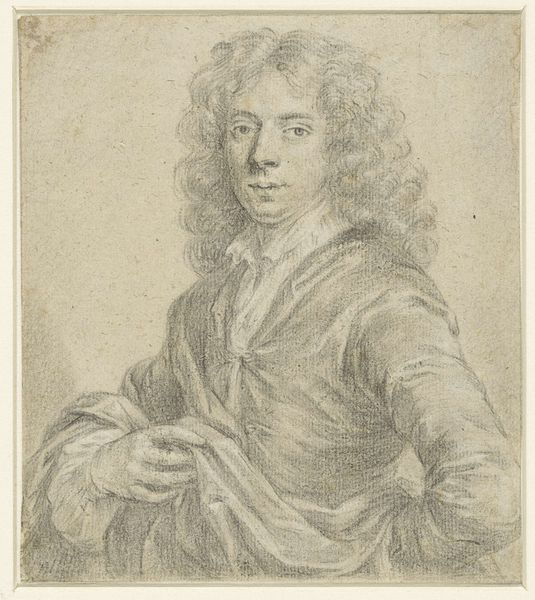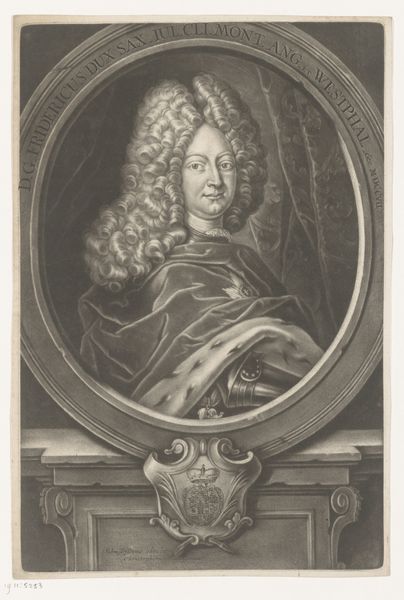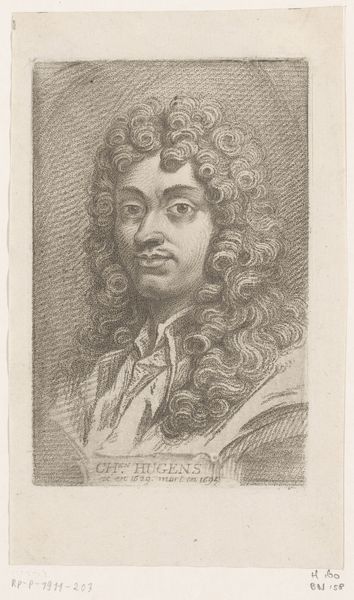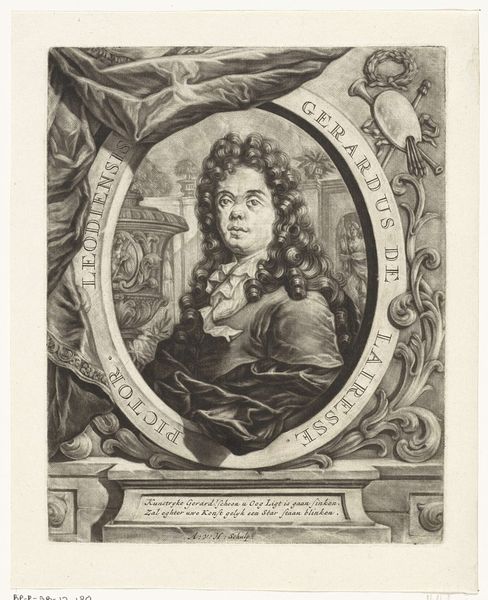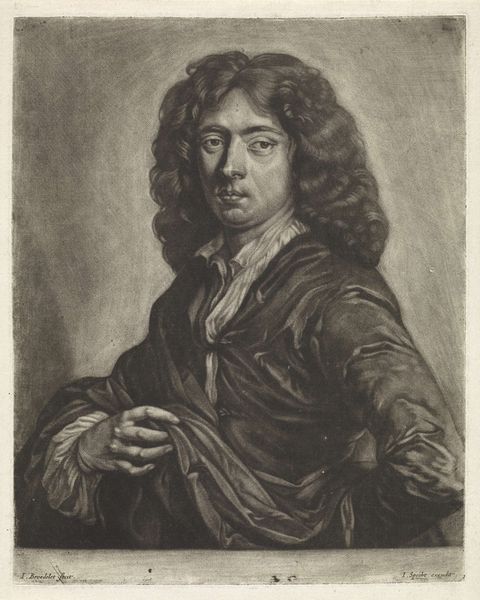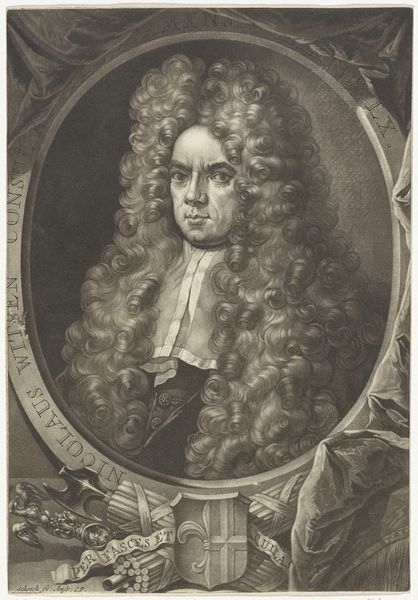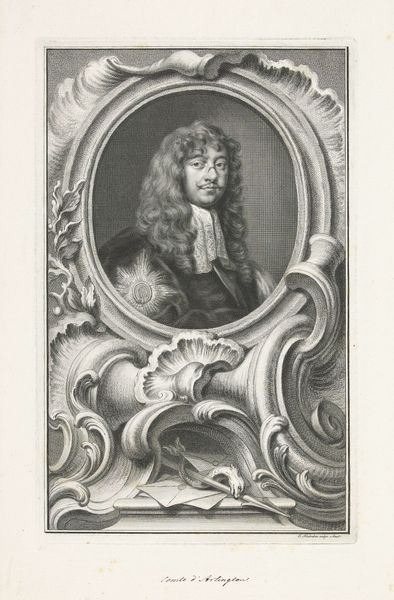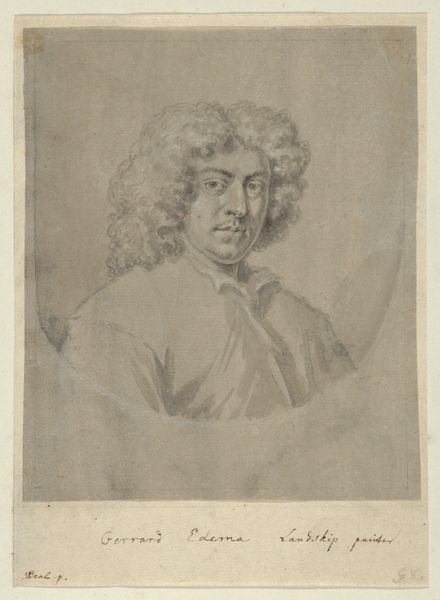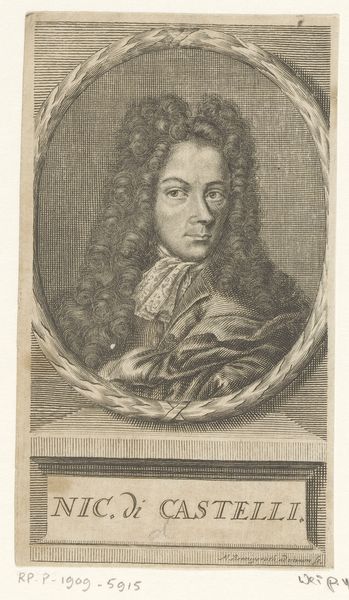
engraving
#
portrait
#
baroque
#
old engraving style
#
limited contrast and shading
#
portrait drawing
#
history-painting
#
engraving
Dimensions: height 157 mm, width 104 mm
Copyright: Rijks Museum: Open Domain
Curator: Here we have "Zelfportret," a self-portrait created by Arnoud van Halen, likely sometime between 1683 and 1732. It’s an engraving, rendered in that signature Baroque style. Editor: My initial impression is of remarkable detail within a small, contained space. The contrast is muted, a symphony in gray scales, creating a somber, almost melancholic mood. Curator: Van Halen operated in a society structured by power and privilege. As such, we should interpret the details of this engraving, from the hair to the attire, as conscious presentations of identity. The elaborate curls signal status. Editor: Yes, observe how the looping lines of the hair are mimicked and extended by the folds of the sitter’s clothing. The eye is guided and contained, never allowed to stray from the individual within. Curator: This also touches upon portraiture conventions during the Baroque era. The commission of a self-portrait speaks to van Halen’s own status, while we must consider that engravings allowed for wider distribution and influence, especially as the printing press accelerated the transmission of ideas and images. Editor: Absolutely, it embodies a structured, formalized aesthetic, reliant on established modes of visual representation. Note the oval frame: a calculated choice to constrain and refine the portrait into a self-contained symbol. The formal boundaries serve to enhance its focused meaning. Curator: Precisely, we can interpret the frame and the sitter's controlled demeanor within it as symbolic. Van Halen's presentation could have been conceived within the tensions of hierarchy, but one can also read a counter-narrative of agency and control. Editor: I find that tension really comes across through van Halen’s careful balance of shadow and light. Curator: Thinking about how artists leverage image construction to construct social and political ideas invites further discussion about how images perform power. Editor: Indeed. There's a structural beauty in this presentation, where the artist uses geometric shapes to convey status and intent. Curator: And recognizing those patterns help to unlock layers of social and cultural insight. Editor: A close viewing allows us to understand and interpret not only the portrait but the context as well.
Comments
No comments
Be the first to comment and join the conversation on the ultimate creative platform.
